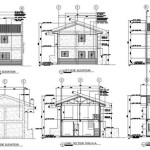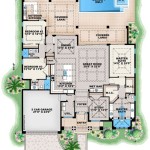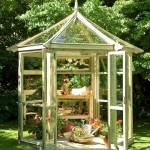West Facing House Plans Per Vastu
Vastu Shastra, an ancient Indian architectural science, offers guidelines for designing homes in harmony with nature. While some consider west-facing houses less auspicious, Vastu principles provide ways to mitigate potential negative effects and harness the positive energy associated with this direction. Implementing these principles can create a west-facing home that is both prosperous and peaceful.
A common concern with west-facing houses is the intense afternoon sun. Vastu recommends specific placements for different rooms to address this. The main entrance, a crucial element in Vastu, ideally should be located slightly towards the north-west portion of the west wall. This placement is believed to attract positive energy and opportunities. Multiple entrances, especially on the south-west or south walls, should be avoided as they are considered inauspicious according to Vastu.
The master bedroom is best situated in the south-west corner of the house. This placement promotes stability and sound sleep. Children's bedrooms can be located in the west or south-west directions. Guest rooms or study rooms are suitable for the north-west section. Positioning bedrooms according to these guidelines is believed to contribute to the well-being and prosperity of the occupants.
The kitchen, representing the element of fire, is ideally placed in the south-east corner of a west-facing house. This placement aligns with the fire element's natural direction and is believed to enhance the health and prosperity of the family. Alternatively, the north-west corner can also be considered for the kitchen, though the south-east is generally preferred. Positioning the kitchen in the north-east should be avoided, as it is considered unfavorable according to Vastu principles.
The living room, a space for social interaction and relaxation, is ideally placed in the north-west or north direction in a west-facing house. This location encourages positive energy flow and facilitates interaction. Ample natural light and ventilation in the living area are recommended to further enhance the positive atmosphere.
The placement of the pooja room, a sacred space for worship, is crucial in Vastu. In a west-facing house, the north-east corner is the most auspicious location for the pooja room. This placement is believed to enhance spiritual vibrations and bring peace and prosperity to the home. Maintaining a clean and organized pooja room is also essential for maximizing its positive energy.
Bathrooms and toilets, representing waste disposal, should be located in the north-west or south-east direction. Avoid placing them in the north-east or south-west corners, as these are considered inauspicious locations for these utilities according to Vastu principles. Proper ventilation in these areas is essential for maintaining hygiene and positive energy flow.
The center of the house, known as the Brahmasthan, should be kept open and free from any obstructions. This central space is considered the heart of the house and plays a significant role in the distribution of energy. Keeping it clutter-free allows for the free flow of positive energy throughout the home, according to Vastu principles.
The compound wall plays a critical role in a west-facing house. Vastu recommends that the west compound wall be slightly higher than the east wall. This is believed to provide better protection from the harsh afternoon sun and create a sense of security and privacy. The main gate should be positioned such that it opens inwards, further enhancing the positive energy flow.
Landscaping can also be utilized to enhance the Vastu compliance of a west-facing house. Tall trees are recommended on the west side to provide shade and reduce the impact of the afternoon sun. Smaller plants and shrubs can be placed in the east and north directions to create a balanced and harmonious environment. A well-maintained garden can significantly contribute to the positive energy of the home.
Colors play a significant role in Vastu. Light and neutral shades are recommended for the exterior walls of a west-facing house. Shades of white, cream, or light yellow are considered auspicious and reflective, helping to minimize the heat absorption from the west sun. Brighter colors can be used for interior walls, depending on the specific room and its intended purpose.
While these guidelines provide a framework for designing a west-facing house according to Vastu principles, consulting with a Vastu expert is highly recommended. A professional can offer personalized advice based on the specific plot and individual requirements, ensuring the optimal flow of positive energy and creating a harmonious and prosperous living environment.

West Facing House Vastu Plan With Pooja Room

Vaastu Shastra West Facing House Plan Home Vastu Plans N

15 Best West Facing House Plans Based On Vastu Shastra 2024

15 Best West Facing House Plans Based On Vastu Shastra 2024

Wonderful 36 West Facing House Plans As Per Vastu Shastra 56b N Simple

35x50 West Facing Duplex House Plan As Per Vastu And Designs Books

25 X30 West Facing House Plan As Per Vastu Shastra Is Given In This Free 2d Autocad Drawing File No Simple Plans

Vastu West Facing House Plan Duplex Design And Designs Books

West Facing Vastu Home Plan

Vastu For West Facing House Plan With Double Story Living Hall








